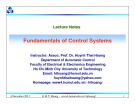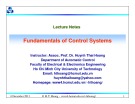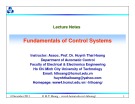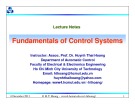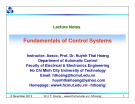Lecture Fundamentals of control systems: Chapter 7 - TS. Huỳnh Thái Hoàng
Lecture "Fundamentals of control systems - Chapter 7: Mathematical model of discrete time control systems" presentation of content: Introduction to discrete - time system, the Z-transform, transfer function of discrete-time system,... Invite you to reference.

